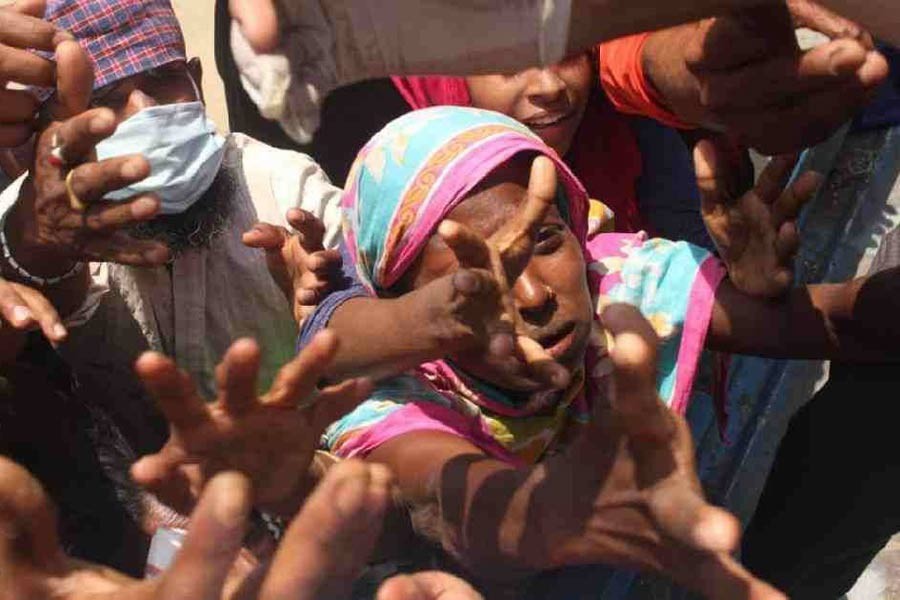
Published :
Updated :

Certain statistics are disconcerting, especially those that portray a grim picture of the country's socio-economic reality. Urban poverty in Bangladesh has increased significantly over the last five years due to the rising cost of basic needs.
A study jointly conducted by the South Asian Network on Economic Modeling (SANEM) and the Global Development Institute at the University of Manchester reveals that in urban areas, the poverty rate, as per the upper poverty line, rose from 16.3 per cent in 2018 to 18.7 per cent in 2023. Conversely, during the same period in rural areas, the rate declined from 24.5 per cent in 2018 to 21.6 per cent . The multidimensional poverty rate in rural areas decreased from 30.4 per cent to 27.6 per cent, while in urban areas, it saw an uptick from 16.8 per cent in 2018 to 18 per cent in 2023.
According to the report, urban poverty has surged because of the prevalence of vulnerable people, recent hikes in commodity prices, shortcomings in urban social security programs, the compounding effects of the Covid-19 pandemic, the Russia-Ukraine conflict, and the worldwide energy crisis.
The urban poor live in close proximity to city centres, but cannot avail of the amenities that city dwellers do. Most of them live in dark squalid conditions in urban ghettoes called slums, while the ultra-poor families live on the streets.
The slum dwellers and floating people are not only mired in grinding poverty but they also pose several risks. The slums in our cities don't provide suitable habitation and the slum dwellers don't have formal access to services like electricity, clean water, healthcare, and education, which are their rights. Criminals often operate from slums. Drug peddling, muggings, burglaries and other nefarious activities are directly linked to the unemployed slum youths.
As the slum population grows, so do the problems. Not only for them, but also for Bangladesh. Hundreds of thousands of children of urban poor are growing up in an atmosphere devoid of even a flicker of hope. Their lives are even more precarious than those in rural areas. Most of them cannot go to school and need to fend for themselves when they are still very young. They do not have any opportunity to eke out a decent or reasonably good living. Slums have their own system of law enforcement usually controlled by local musclemen and their godfathers. A section of corrupt police personnel allegedly visit the places from time to time to collect money from the musclemen.
To add to their woes, the slums are extremely unhygienic, vermin havens, and people contract miscellaneous diseases they never knew even existed. The extent of their misery is hard to describe and their future is extremely bleak.
The country's economic planners and decision-makers cannot evade the issue and write it off as a social reality all developing countries have to accept. Sadly, government initiatives and those by the NGOs are not addressing the welfare of the urban poor adequately- and their plight is going to worsen due to the migration of the rural poor to the cities. Long-term planning is needed to improve the quality of life of slum dwellers and should be high on the government's agenda.


 For all latest news, follow The Financial Express Google News channel.
For all latest news, follow The Financial Express Google News channel.